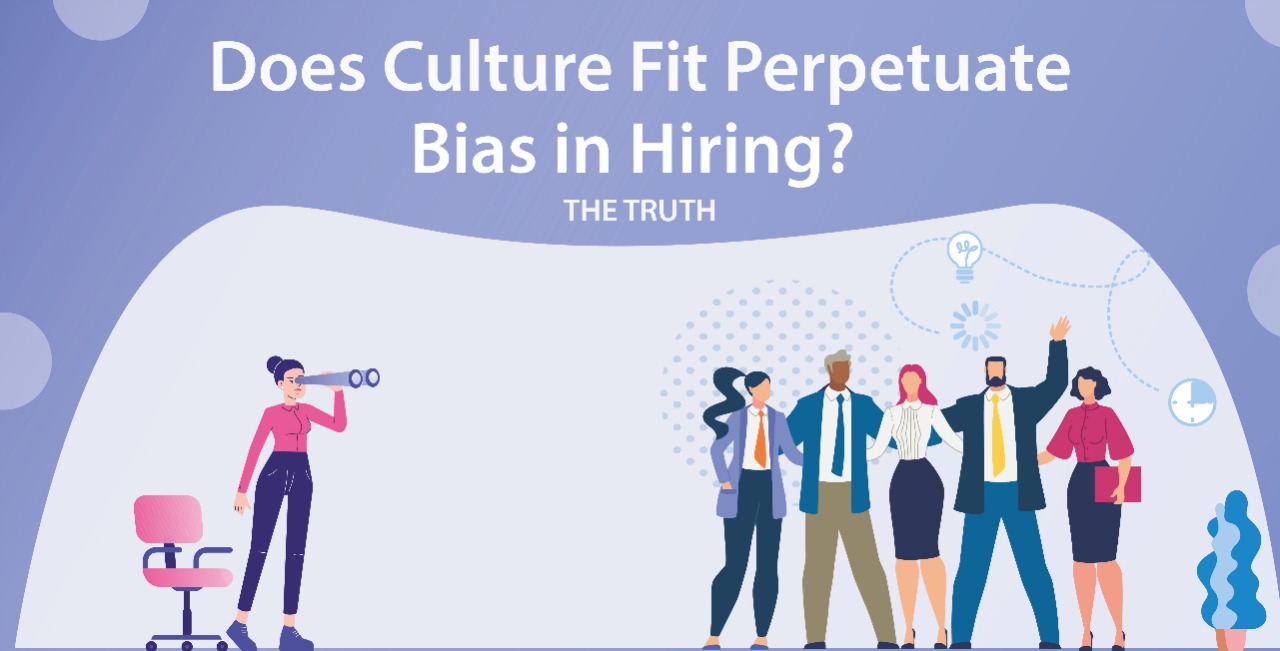The term ‘culture fit’ is sort of an inkblot test in the world of work. Even when we all may be hearing the same two words, our interpretation of the phrase may be poles apart.
For some, when this phrase “culture fit” is thoughtfully and deliberately applied, it can be a measure for their alignment with company’s values. For others, it may simply mean “I only hire people I’d have a beer with.” Or in other words, ‘culture fit’ can become a gateway to bias in hiring processes, which reinforces conscious and unconscious biases and leads to recruiting people who all look, think, and work alike, over and over. Emphasizing culture fit as an important hiring metric, hiring managers and HR professionals may only hire candidates who reflect their own “culture.” This ultimately forms a homogenous organization.
Redefining Company Culture
If hiring managers describe their company culture in terms of personality traits (favor certain job candidates because they “have a good attitude” or “are amiable”, they hinder their organization’s ability to innovate as they encourage homogeneity. On the flip side, when hiring managers define their culture in qualitative terms, such as “high autonomy with a complex matrix” or “low structure,” they have a greater likelihood of mapping the skills and abilities of a diverse set of people into their culture.
Just as knowledge, skills and abilities are measured, it is important to acknowledge and objectify culture and make it mappable to specific values, skills, motivators and abilities of candidates. Instead of having a vague notion of culture when you focus on concrete values, your organization will see a significant improvement in terms of both culture and diversity and inclusion (D&I).
Anka Wittenberg, chief diversity and inclusion officer and SVP at SAP says:
“If you’re hiring only for cultural fit, it’s like planting a forest with only one kind of tree — you get a monoculture. It’s not sustainable; so we focus on what our values are as a company, and how each individual we consider hiring embody those. We don’t hire specifically for culture fit, but on how those values are lived by candidate.”
Ditching the ‘Beer Test’
You might be missing out on some incredible talent if your company is employing the “beer test” as a marker of a candidate’s fit for a job. As hiring for culture fit can reinforce hiring bias, it can potentially hinder the objective of bringing in a diverse set of opinions and skill sets. This can also engender a narrower cross-cultural and multi-ethnic workforce.
In a Harvard Business Review article, Patty McCord, the former chief talent officer at Netflix, presents the right approach to combat bias in hiring. Advising startups and entrepreneurs, she gives the example of a programmer who didn’t quite fit as a software developer mold of the Silicon Valley. The reserved and “buttoned-up” individual had been building an app for Netflix. And that’s what got him a job there.
Initially, McCord was skeptical whether the engineer would be able to thrive in Netflix’s culture. “I did wonder how he’d fit in with the high-powered team he was joining. I hoped it wouldn’t burn him out,” she acknowledges.
Five years later, that buttoned-up developer – Anthony Park — was named Netflix’s VP of engineering, a role he held for six years. This person proves that organizations can adapt to many people’s styles.
Does this all mean that we should hire without any consideration for company culture?
Of course not.
All we need is a different approach to find out how well a potential candidate can fit into our current company culture while addressing bias in hiring. And this is why you should hire for ‘culture add’ rather than ‘culture fit.’

Wharton’s top-rated professor and one of the HR’s most influential international thinkers Adam Grant says:
Stop hiring on cultural fit. That’s a great way to breed groupthink. Emphasizing cultural fit leads you to bring in a bunch of people who think in similar ways to your existing employees. There’s evidence that once a company goes public, those that hire on cultural fit actually grow more slowly because they struggle to innovate and change. It’s wiser to hire on cultural contribution. Instead of looking for people who fit the culture, ask what’s missing from your culture, and select people who can bring that to the table.”
Hiring for ‘Culture Add’— An Attractive Alternative to Curb Bias in Hiring
Hiring for ‘culture add’ is crucial. If companies want to build a strong, innovative culture, they should seek candidates who can bring something to the table – who are from diverse backgrounds and have different experiences from their own. Culture adds foster a resilient culture by preventing the groupthink attitude. With their ability to think differently, it is vital to infuse them in the culture for growth.
In a nutshell, hiring for ‘culture add’ helps steer the future of your company culture in the right direction as well as lets you take into account what it can bring to your business.
